Translation: December 1906 Les Sports Modernes: The Vanderbilt Cup in America
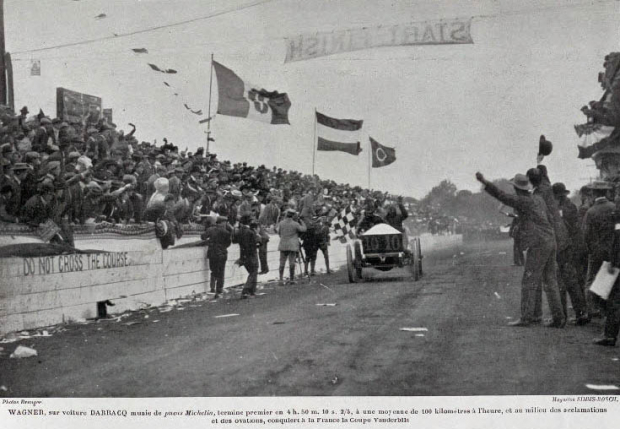
Professor Pau Medrano Bigas, Professor of Graphic Design at the University of Barcelona, has forwarded an article on the Vanderbilt Cup Race from a December 1906 French magazine Les Sportes Modernes. Sam Berliner III has provided its English translation.
I just have found this article about Vanderbilt Cup in a French magazine. Always a pleasure sharing, Howard.
Your friend in Barcelona, on the shores of the Mediterranean sea,
Pau
Sam Berliner III, the convenor of the Long Island Motor Parkway Panel, has taken my challenge and translated the article. The most fascinating aspect of the article was the French pride in winning their third consecutive Vanderbilt Cup Race.
Great job, Sam III!
Enjoy,
Howard Kroplick I
The Vanderbilt Cup in America
[transcribed and translated from the French in Les Sports Modernes December 1906
by Sam Berliner, III - 14 Jun 2016]
[Sam Berliner III: This is a cross between a rigorous translation and a casual one in
order to attempt to retain the Gallic flavor of the original report.]
For the third time, French industry has triumphed in the greatest American contest, the Vanderbilt Cup. What’s new, then, is that, in a major international tournament, the stake for which was the world-wide retention of the trial, that of the whole world in a way, to affirm a mechanical superiority over the American market first, the genius of our engineers magnificently conquered. One must admire the harmonious career of the French industry; for the over ten years that it has fought, it has not left the fray; in this way, at each new assault, it seemed to the contrary to find new energy, it shows itself each time younger, more forward, more generous in producing new creations which, each time, gave it victory and its profits both in glory and money. Such a so persistent and so sparkling series of triumphs is without example; in twelve years of races, only four times have we known defeat; in the Gordon-Bennett Cup of 1902 and 1903, on the Brescia circuit in 1904 et 1905. All the other great contests, true international championships, decisive tournaments for, and far in advance of, which each was prepared, beyond count, to give to their side the absolute best chances, in all these trials: Paris-Berlin, Paris-Vienna, Paris-Amsterdam, Paris-Madrid - interrupted, the Circuit of the Ardennes, the Circuit of the Sarthe, the Gordon-Bennett Cups.and the Vanderbilt cups, and so many other examples, were successfully fought by the French industry.
The demonstration of the superiority of the French industry is especially discouraging for foreign industry because it is not due to the stunning career of any one single marque. The demonstration is, in effect, general; in two years the six great international race contests - I listed them above - were won by five French marques: Brasier, Panhard, Rénault, Darracq and Lorraine-Dietrich. Chance does not for long do things well.
The consequences of the new victory were considerable. In keeping for France the Gordon-Bennett Cup, the house of Darracq - because it was their champion Wagner who triumphed - rendered the national industry a shining service.
The French victory in the Vanderbilt Cup made a great impression when it was won; the race had, this year, generated considerable interst. The public, excited by the fantastic recitals in the papers which, week after week, wrote about the Cup with an invisible force, was wildly impassioned. The American eliminations had been a great success; that of the finale surpassed the imagination. It also had tragic consequences.
The race was fought over a course of 48 kilometres {30 miles} which the contestants had to cover ten times; the army, without a peep, assured the course police and clearance of the course. Security was, however, quite insufficient to restrain a crowd that curiosity and excitement drove to the worst indiscretions. It was said that there were 400,000 to 500,000 spectators; it’s possible. That said, there were in the fields bordering on the course a great exodus of crowds in which thirty-one people would find death in the crush and in collisions; one doesn’t even count the injured.
The races themselves came up with many victims; four contestants: Sheppard, Weilschott, Lawell and Joe Tracy, mangled many spectators who audaciously ventured on the course: in total, six deaths and a half-dozen injured, a macabre balance that reminds us of our bloody Paris-Madrid race. So many deaths also panicked the organizers, who decided, if the Automobile Club of France would not resolve to organize a Vanderbilt Cup in France - which it certainly will not - to run the test on a track or to do away with it.
The struggle was poignant: four countries were represented by four marques, of which three, those of France, of America, of Italy, were complete, strong with five cars; Germany only put two cars in the line-up, two Mercedes which, in spite of their marvelous qualities, found themselves at a disadvantage in a fight where they were two against five.
The American team never had a chance because of the mediocre results of their champions in the elimination race. One of them, Tracy, looked to be quite brilliant; it was he who ran the fastest lap, in covering the 48 kilometers in 26 m. 21 s., and he might have gained honorable mention had he not, in a corner, that at Bull’s Head, clobbered some spectators - one of whom died in the field - and quit, terrified.
The real interest in the race was in the encounter of the Italian and Fremch teams; one expected a moving duel, one could but hope.
From the start, Wagner, in the Darracq, took the lead and, the fastest, in a simple action, ran his first lap in 28 m. 26 s., ahead of, in order, Jenatzy (Mercedes), Duray {Lorraine-Dietrich), Lancia (Fiat) and Nazzaro (Fiat). In the second lap, Wagner is always in the lead; Duray is second by at least 3 minutes; Lancia is third, followed by Jenatzy who preceeds Sheppard and his Hotchkiss.
The order didn’t change for the third lap; Wagner himself always led the dance, but behind him Lancia held his place; he comes up in a lightning run and is not more than 50 seconds from Wagner in the fifth lap; in the sixth, the crack Frenchman leaves the lot in front of which he himself is more than six minutes ahead; Duray and Jenatzy pass and repass in a struggle so severe that they regain the lead from the racers who only precede them by a few seconds or by two or three little minutes. The Americans are shortly out of the running; the grouped European cars begin the march. Wagner and Lancia pursue their moving duel, closely followed in the ninth lap by the Lorraine-Dietrich of Duray, which is only a minute and a few seconds from the Italian.
Here’s the final lap: Lancia crosses the finish line. Oh, my! Has he won? Lancia passed Wagner, stuck. The anxiety is great, because the Italian is, from the begining, barely six minutes ahead of the Frenchman. To whom will come the victory? The minutes tick away one by one; all the spectators, prey to the deepest emotions, search the horizon... Nothing!... nothing!... Suddenly, a vision! A great cry greets it. Who is it? The anguish is short, because Wagner surges ahead to finish with a three minute lead over the intrepid Italian driver. The enthusiasm peaks and immediatelt renews with the arrival of Duray in a hurricane, crossing the line and finishing the race within 15 seconds of Lancia. Behind him, Albert Clément finishes in his Bayard-Clément and Jenatzy in his Mercedes... and the crowd, in the viscissitudes of the race, so excited by enthusiasm, invades the course, the road by the reviewing stands and acclaims the victors of this sensational race. The organizers try to clear the road; an impossible task in which they give up presently to halt the race.
Here are the brief and edifying results:
1st WAGNER, in Darracq, in 4 h. 50 m. 10 s. 2/5.
2nd LANCIA, in F.I.A.T., in 4 h. 53 m. 28 s. 4/5.
3rd DURAY, in Lorraine-Dietrich, in 4 h. 53 m. 44 s. {pg. 8} / pg. 9}
4th A. CLÉMENT, in Bayard-A. Clément, in 5 h. 1 m. 10 s.
5th JENATZY, sur Mercedes, in 5 h. 4 m. 38 s.
The whole of the results is quite simply remarkable for the European industry in general, for the French and Italian industries in particular.
The Darracq marque won for the second time in the Vanderbilt Cup; since it made its appearance, it was a few months, with the passing of the circuit of the Sarthe, it amazed the experts with the purity of its lines, its finish, and its precision of mechanical detail. It is called the indestructible engine; the bold use of a new metal for the valves dismayed the factories of Suresnes. Beaten in the Grand Prix of the A. C. F. {Automobile Club of France}, Darracq bankrupt, with Hanriot, gained its rebirth in the circuit of the Ardennes, where, at first with caution, it made it to the finish to vanquish Duray by 1 m . 28 s. The Vanderbilt Cup closed for them a victorious season in glorious fashion, in maintaining in the first rank of the French industry the marque which, in two years, had accrued to its credit three great international victories: one in the circuit of the Ardennes in 1905 and two in the Vanderbilt Cup in 1905 and 1906.
The performance of Duray, finished third, at 3 m. 34 s. of winning, is no less remarkable; last one of the lot of racers, Duray never had ahead a free road; he was forced to pass one by one all his adversaries in a race encumbered by an undisciplined crowd. The third of the Frenchmen, A. Clément, after a rather hesitant debut in the race, ran a race astonishing in its regularity and speed.
In his splendid Mercedes, Jenatzy ran a fervent race as only he knows how to do it, jumping lap by lap from second to fourth place to return to third and, after several discouraging stops occasioned by punctures, finished in a raging final effort, in the group in the lead, a few minutes behind the winner.
I have reserved to the last the superb performance of the second, Lancia. The man is a stupefying driver; calm, audacious, intrepid, of consummate skill, powerful, he is among the kings of the wheel, one of the most impressive for his brio, for the imperious certainty of his manner. But the man hadn’t a chance; not one driver boasts such a glittering career as fully accomplished anywhere else, because the man and the machine are marvelously linked, as on the F. I. A. T.
At the same time, when it seems that the valiant boy holds it in his hand, victory escapes him. He is the eternal second. The F. I. A. T.'s share, however, his strange destiny: to them second place in the Gordon-Bennett Cup of 1905! Second place in the circuit of the Sarthe in 1906! and second place again in this year’s Vanderbilt Cup! Of all the industries which French industry has faced, only one, that of Italy we knew, was able to face her, and it’s to F. I. A. T. that the very great honor fell to counterbalance its supremacy.
Our triumph was nevertheless complete: of five competitors who reached the goal, three came from France, and the first four were doors opening to one of the most remarkable of our national products, because the Michelin pneumatics which by collaborating on a new victory confirmed that we already had them, so comprehensive, in the circuit of the Sarthe and in those of the Ardennes, and adding new trophies to those they had already achieved during the 1906 season in the Targa Florio in Sicily, in the Gold Cup in Milan in Italy, in the Grand Prix of the A. C. F.; and finally in the Belgian contest and in the circuit of the Ardennes.
The vicissitudes of the Vanderbilt race did overshadow some other sporting events. Of them all, I can not remember a single one, already well advanced, the classic meet at Mont-Ventoux, run for the most magnificent French marques. La Buire, the occasional little mundane tourist performances on that rough and and famous coast. It also holds the record for the previous year; in the race of the 1905 meet, Mr. Motard in his 30 HP La Buire ascended the terrible grade in 24'19"2/5, a performance which the race cars - a singularly edifying detail - haven’t been able to equal this year.
FRANTZ REICHEL
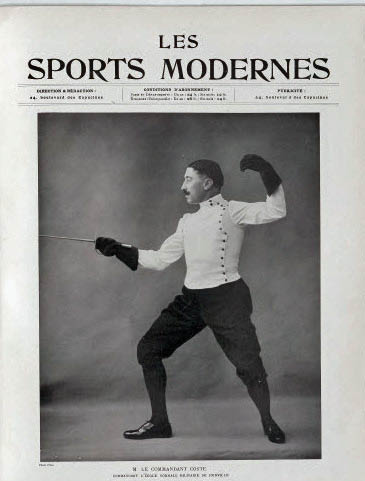
Cover of the December 1906 issue of Les Sports Modernes
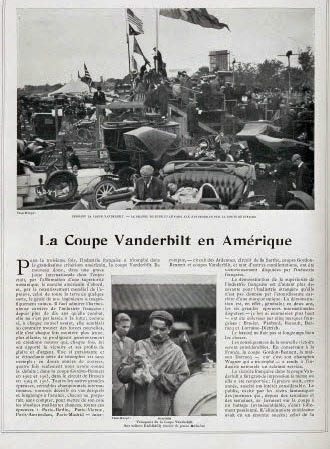
The article "The Vanderbilt Cup in America"
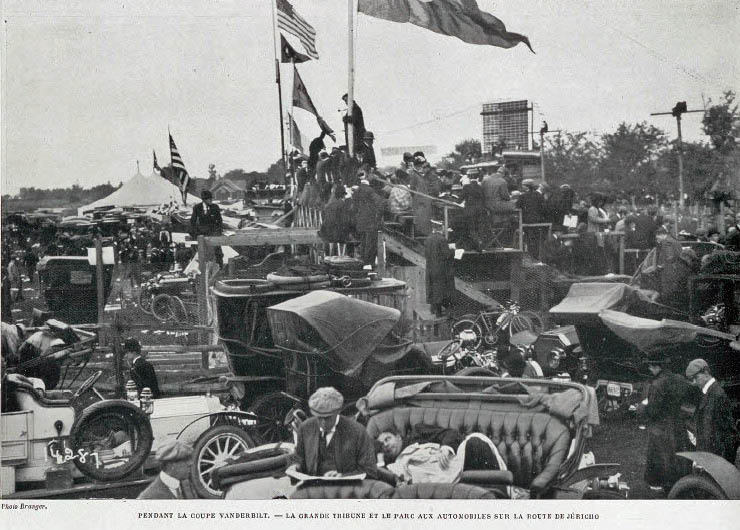
Caption: During the Vanderbilt Cup- The grandstand and automobiles parked on Jericho Road
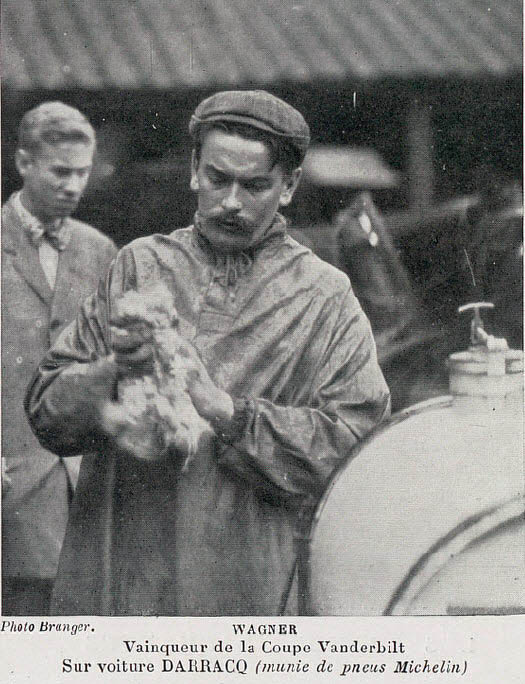
Caption: Wagner- Winner of the Vanderbilt Cup in a Darraqc (with Michelin tires)
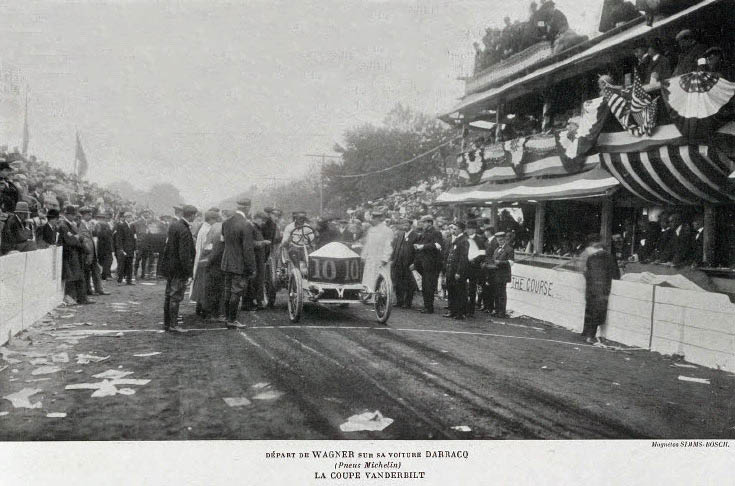
Caption: Start of the Wagner in the Darraqc (Michelin Tires)
Vanderbilt Cup
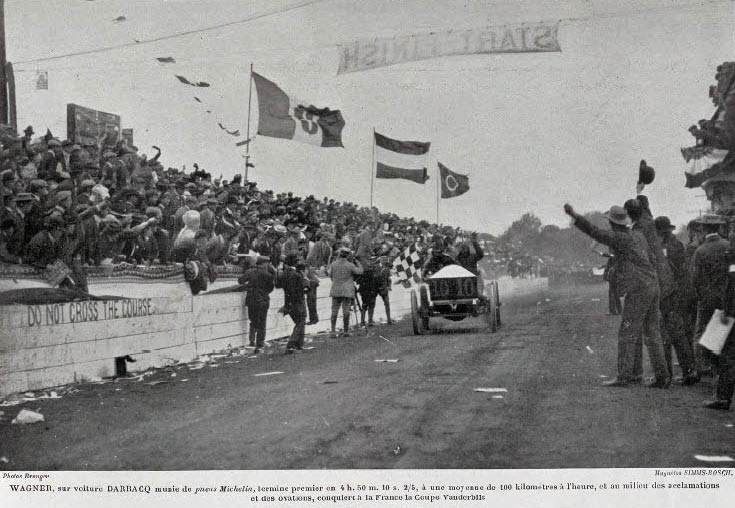
Caption: Wagner in the Darraqc (Michelin Tires) finished first at 4 hours, 50 minutes, 10 seconds 2/5, an average of 100 kilometers per hour in the middle of a salute for the French winning the Vanderbilt Cup
Note: The first use of a checkered flag to signify the end of a race.
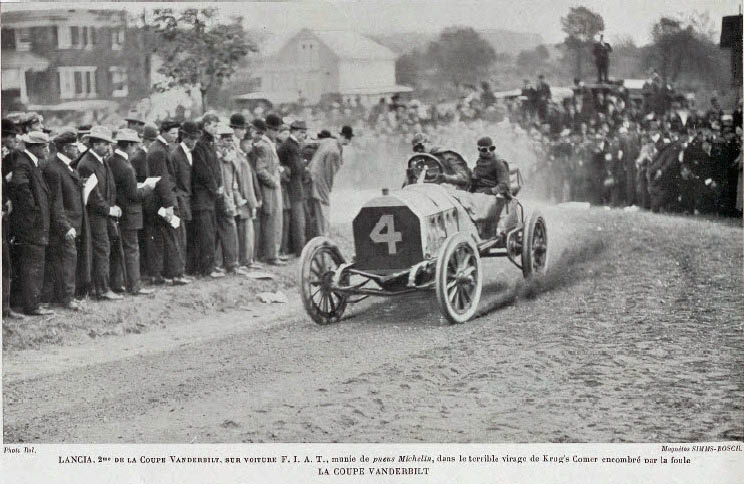
Caption: Lancia, 2nd in the Vanderbilt Cup in a F.I.A.T. (with Michelin Tires) at the terrible turn at Krug's Korner surrounded by the crowd.
Note: The corner was the Hairpin Turn in Old Westbury not Krug's Korner in Mineola.
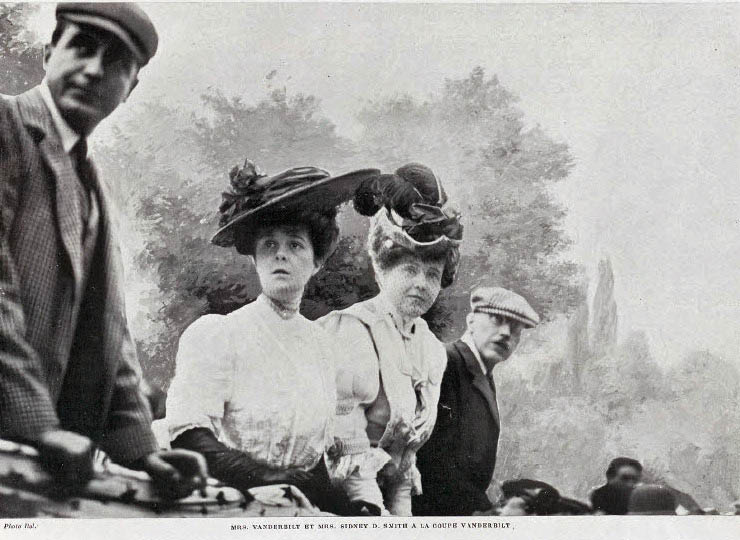
Caption: Mrs. Vanderbilt and Mrs. Sidney D. Smith at the Vanderbilt Cup
































Comments
Mais oui, M. Kroplick - but ONLY if you send legible copy. Aussi, c’est “Les” Sports Modernes - pluraL. Votre vieil ami, Sam, III
________________________________________
From Howard Kroplick I
Merci beaucoup!
The parking lot scene is incredible, especially when you consider that the auto was barely 10 years old at that point. Note the very modern looking license plate at lower right. The snoozing gentleman looks no more comfortable than he would in the back seat of my FIAT 500. The Jericho Turnpike always having been such, “parked on Jericho Road” might better be translated as “on the Jericho road” or as “on the road at Jericho”. I’ve watched the race film again and again and, after just reading the first-hand account, the crowd surging onto the track becomes more terrifying with each viewing. Sam III